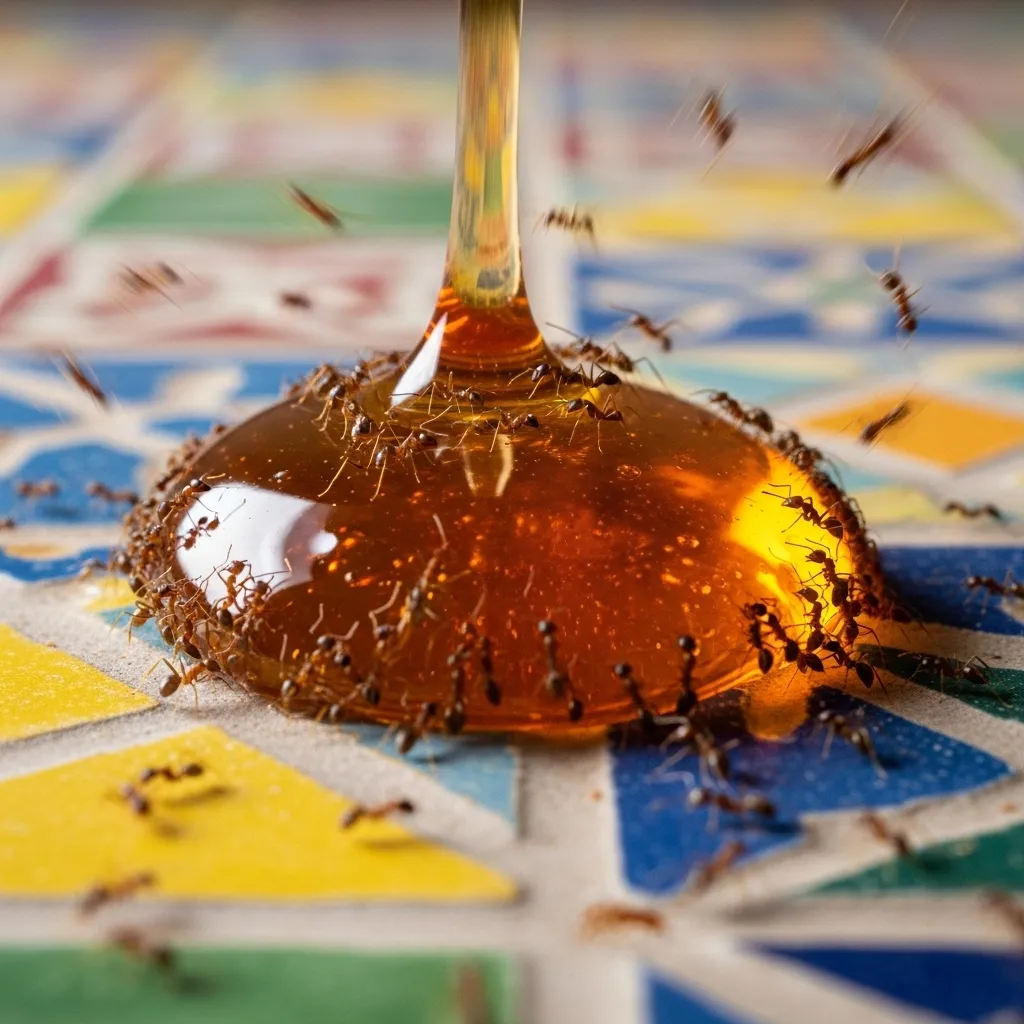
Know Your Unwanted Guests: Common Kitchen Pests
Understanding what attracts different pests is the key to effectively keeping them out. Each tiny invader has its own preferences for food and shelter. Once you know what they’re looking for, you can tailor your cleaning and prevention strategies to be most effective. Let’s look at some of the most common culprits you might find in your kitchen.
The Persistent March of Ants
When you see one ant, you can be almost certain there are more nearby. Ants are social insects that operate as a team. Scout ants venture out from the colony in search of food. When a scout finds a promising source—a drop of honey on the counter, a few sugar granules on the floor, or even the pet’s food bowl—it returns to the nest, leaving an invisible chemical trail called a pheromone trail for its nestmates to follow.
What they want: Ants are primarily attracted to sweets, greases, and proteins. A sticky spot of spilled juice is just as appealing as a crumb from a cookie. They also need water, so a damp sponge left in the sink or a small leak under a pipe can be a major draw.
Your strategy: The key to stopping an ant parade is to eliminate the food source and erase their chemical trail. This is why wiping down counters is so important. Using a cleaner with vinegar is particularly effective because the acid neutralizes the pheromones, confusing the ants and breaking their line of communication.
The Annoying Haze of Fruit Flies
Fruit flies seem to appear out of nowhere, especially in the summer. They have an incredibly keen sense of smell and can detect the scent of fermenting organic matter from a great distance. They are not a sign of a dirty home, but rather a sign that something is ripening or fermenting nearby.
What they want: Their primary attractant is fermenting sugars. This includes overripe fruit on the counter (like bananas with brown spots), potatoes or onions that have started to go bad in the pantry, and the residue in the bottom of a recycling bin or garbage can. They can also breed in the gunk that builds up inside sink drains.
Your strategy: The best defense is to manage your produce. Store ripe fruit in the refrigerator rather than on the counter. Promptly dispose of any produce that is past its peak. Regularly take out the trash and recycling, and make sure to rinse containers before tossing them in the bin. Cleaning your sink drain weekly helps eliminate a common breeding ground.
The Unsettling Presence of Cockroaches
Cockroaches are resilient survivors that can be particularly distressing to find in a kitchen. They are nocturnal, so if you see one during the day, it can be a sign of a more significant infestation. They can flatten their bodies to fit into the tiniest of cracks and crevices.
What they want: Cockroaches are not picky eaters. They are drawn to grease, starches, and decaying organic matter. A greasy film on a stovetop, crumbs under the toaster, or food residue in an uncleaned drain are all gourmet meals to a cockroach. They also desperately need water and are often found in damp, dark areas like under the sink, behind the refrigerator, or near leaky pipes.
Your strategy: Meticulous sanitation is your best weapon. Never leave dirty dishes out overnight. Wipe up grease splatters from your stove and backsplash after every use. Keep floors free of crumbs. It’s also vital to control moisture. Fix any leaky faucets or pipes immediately and ensure the area under your sink is dry. For more information on identifying and managing pests, the National Pesticide Information Center (NPIC) is a reliable resource.
The Silent Spoilage by Pantry Moths
Pantry moths, also known as Indian meal moths, are pests of stored food products. You often bring them into your home unknowingly inside packages of flour, cereal, grains, pasta, nuts, or even pet food. The adult moths themselves don’t eat, but they lay their eggs in these food sources. The damage is done by their larvae, which look like tiny caterpillars that spin webs as they eat.
What they want: The larvae thrive on dried goods. They can chew through cardboard boxes and thin plastic bags to get to the food inside.
Your strategy: The solution is proper food storage. When you bring home items like flour, oats, or rice, transfer them from their original packaging into airtight containers made of glass or hard plastic. This contains any potential infestation to a single jar and prevents it from spreading throughout your pantry. Regularly inspect your pantry, and if you find evidence of moths, discard the infested item immediately and thoroughly clean the shelves.

















